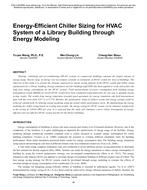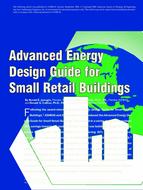An energy balance at the exterior surface of a roof is an essential boundary condition for mathematically describing the heat flow through a multilayered insulated roof. The dominant parameters affecting the heat flow during the daylight hours are convection and the surface properties of reflectance and emittance. At night and during the twilight hours, the infrared emittance and mass transfer balance against the roof’s heat flow. The mass-transfer coefficient is calculated directly from a dimensionless term called the Lewis number and the air-side convective-heat-transfer coefficient. The approach is applicable to turbulent and laminar flow regimes. However, research has shown the calculation procedure to be questionable at both low velocities and small airto-water temperature differences, conditions prevalent during the evening hours on a low-slope roof. Hence, a correlation was formulated and validated against experimental data to better estimate the mass-transfer coefficient and, therefore, the heat transfer through the roof when condensation or evaporation occurs.
Authors: William A. Miller, Ph.D., P.E.; Jerald A. Atchley
Citation: Thermal Performance of the Exterior Envelopes of Buildings VIII
Keywords: December, Florida, 2001
Citation: Thermal Performance of the Exterior Envelopes of Whole Buildings VIII
Product Details
- Published:
- 2001
- File Size:
- 1 file , 700 KB
- Product Code(s):
- D-7960


